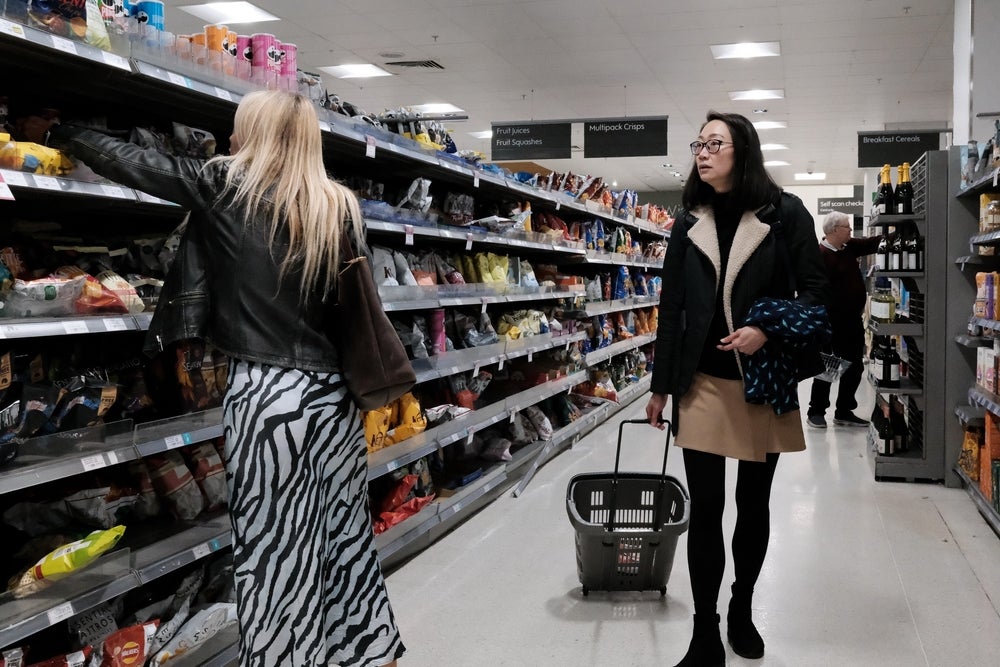The rise of e-commerce giants like Amazon and the convenience of online shopping have led to widespread pessimism about the future of traditional retail stores.
Seeming to reinforce this bleak outlook are abandoned shopping malls, struggling storefronts, and official statistics. Moreover, the rise of online shopping has been a game-changer for consumers around the world, causing some to believe that it’s destined to be the only game in town.
Leading much of the world in online shopping, the UK serves as a shining example of success in this field. E-commerce accounted for 30% of the country’s total retail market in 2021 – a significant increase from the 20% reported in the previous year.
This great shift to online shopping has translated to an annual revenue of over US$120bn. An impressive 82% of the UK population made at least one online purchase in 2021, highlighting the widespread adoption of e-commerce in this country.
So, with over half of Britons regularly shopping online, it’s easy to assume that brick-and-mortar locations are struggling to keep up. But is this narrative accurate, or is it a misrepresentation of the true state of the retail industry?
Arguments of the pessimists
Many pessimists argue that brick-and-mortar retail stores are facing their demise due to the convenience and lower prices offered by online shopping.

US Tariffs are shifting - will you react or anticipate?
Don’t let policy changes catch you off guard. Stay proactive with real-time data and expert analysis.
By GlobalDataThey believe that the rise of e-commerce has made physical stores obsolete, and that consumers will continue to shift towards online shopping as technology continues to advance. Traditional retail is doomed and the future belongs to e-commerce, they reason.
Why the pessimists are wrong about the future of retail
While e-commerce has certainly impacted the retail industry, the negativism surrounding brick-and-mortar retail stores is entirely misguided. Despite the widespread doom and gloom, many of these retail businesses are alive and thriving.
It all comes down to changing with the times. Like many other industries in the digital era, successful retail is making a shift.
Indeed, brick and mortar is evolving; and so are the tools and tech designed to bridge the gap between the online and offline realms. And, fortunately for traditional retailers, a few important adjustments can pull your business from the 1970s to present day.
Many brick-and-mortar retailers have already adapted to the new digital reality by incorporating omnichannel strategies that offer customers the convenience of online shopping while also enhancing their in-store experience.
Often overlooked by the doomsayers is the fact that an important segment of customers will always prefer the in-person experience of shopping at physical stores and the ability to see, touch and try on products before purchasing.
The inherent inability to provide this palpable, tangible experience for customers is the Achilles’ heel of e-commerce.
How traditional brick-and-mortar retailers can survive
To survive in the new digital reality, however, traditional brick-and-mortar retailers need to embrace change and adapt their business models to better meet the evolving needs of consumers.
This includes integrating digital technology into their stores, such as providing in-store Wi-Fi and using mobile apps to offer personalised recommendations to customers. They can also implement strategies such as buy online, pick up in-store (BOPIS) and curb-side pickup to offer a seamless omnichannel experience to their customers.
So, while e-commerce has brought significant changes to the retail industry, it does not mean that traditional brick-and-mortar retail stores are doomed. Traditional retailers that are willing to adapt and incorporate digital strategies will be able to survive and thrive in the new digital reality.
Ultimately, this means better experiences for shoppers and a more holistic view of the customer journey for retailers.



